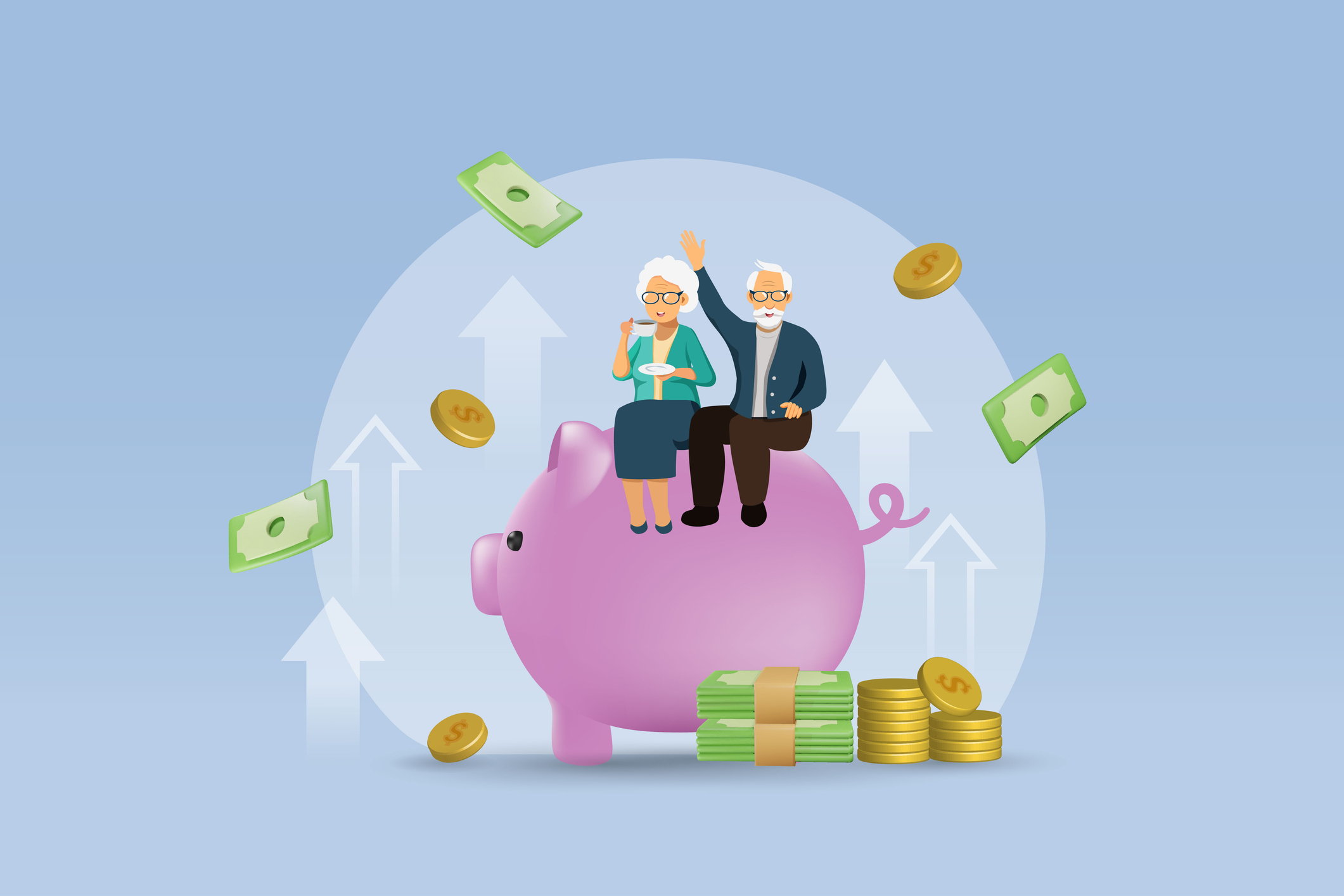Now's a Great Time to Build a Bond Ladder
Given the rate-curve inversion, one-year ladders have higher average yields than longer ones


Even after two favorable monthly inflation reports, cash and bond yields remain high and steady. It continues to be a buyer’s market. Still, readers are often uncertain how best to proceed, particularly with new or rollover money. You may be tempted by a basic broad-based bond market index fund. But you can do better.
Your goal should be two guarantees: high yield to maturity and full recovery of principal. Neither is assured using index-based exchange-traded funds. An actively managed, go-anywhere fund from an ace manager such as Baird, Fidelity or Pimco will out-return the indexes over the years, but there is near-term price risk if managers mistime bets or if hostile reports on jobs or inflation or another trading signal rips into bond values.
If your choices are limited within a 401(k) or other retirement plan, choose a short or ultra-short bond fund option, if possible. If not, stay with cash for now. The inverted yield curve, with short-term yields the highest, remains your friend and makes cash profitable and safe.
From just $107.88 $24.99 for Kiplinger Personal Finance
Become a smarter, better informed investor. Subscribe from just $107.88 $24.99, plus get up to 4 Special Issues

Sign up for Kiplinger’s Free Newsletters
Profit and prosper with the best of expert advice on investing, taxes, retirement, personal finance and more - straight to your e-mail.
Profit and prosper with the best of expert advice - straight to your e-mail.
Looking ahead at bonds
But if you suspect cash yields will drift down and want to lock in the current rates without near-term price risk, my preference would be to infuse some dollars into individual bonds or into target-maturity funds or ETFs, such as Invesco BulletShares or iShares iBonds ETFs. If you have an account with Schwab, Fidelity or E*Trade, it is neither difficult nor costly to research, compare and buy single bonds. Then you, and not a fund manager or the Federal Reserve, control how much and when you get paid and the timing of repayment of the principal.
Normally the best method is to ladder maturities, arranging for parts (rungs) to mature in succeeding quarters or years so you both cement the best yields along the curve and know you will have money to roll over at specific times. You can use Treasuries, high-quality corporate, bank or utility bonds, municipals, high-yield bonds, or a mix of all of them. You can even request a brokerage’s bond platform to set it up for you.
I went to Schwab’s tool to ladder either Treasuries or certificates of deposit. Given the rate-curve inversion, one-year ladders have higher average yields than longer ones. A step stool of T-bills of three, six, nine and 12 months pays an average 5.25% to maturity; use CDs and you get 5.45% (as of May 31). A five-year ladder works out to 4.76% for Treasuries or 4.98% for CDs.
To beat that, of course, you can buy corporate bonds at a spread of one to two percentage points above Treasuries. If you navigate the bond listings, you can ladder one- through five-year BBB-rated bonds for an average 6% yield to maturity; I could recently order a five-step triple-B assembly from Synchrony Bank, Boeing, Ares Capital, Blue Owl and Boston Properties with an average yield to maturity of 5.98%, with none below 5.82%. It’s possible those bonds might flop around in value, but if your plan is to keep them to the end, that doesn’t matter — even if, say, Boeing were to be downgraded to junk status.
Or, you could use a mélange of BulletShares investment-grade, target-maturity corporate ETFs dated 2025 through 2029 for an average 5.3% — less than a BBB ladder due to its A and AA holdings. BulletShares charge just 0.1% and pay monthly, as oppsed to the semiannual interest payments from individual bonds. What matters either way is that you can roll over the principal on your own terms.
Note: This item first appeared in Kiplinger Personal Finance Magazine, a monthly, trustworthy source of advice and guidance. Subscribe to help you make more money and keep more of the money you make here.
Related Content
Profit and prosper with the best of Kiplinger's advice on investing, taxes, retirement, personal finance and much more. Delivered daily. Enter your email in the box and click Sign Me Up.

Kosnett is the editor of Kiplinger Investing for Income and writes the "Cash in Hand" column for Kiplinger Personal Finance. He is an income-investing expert who covers bonds, real estate investment trusts, oil and gas income deals, dividend stocks and anything else that pays interest and dividends. He joined Kiplinger in 1981 after six years in newspapers, including the Baltimore Sun. He is a 1976 journalism graduate from the Medill School at Northwestern University and completed an executive program at the Carnegie-Mellon University business school in 1978.
-
 'Humbug!' Say Consumers, Despite Hot GDP: Stock Market Today
'Humbug!' Say Consumers, Despite Hot GDP: Stock Market Today"The stock market is not the economy," they say, but both things are up. Yet one survey says people are still feeling down in the middle of this complex season.
-
 The SEC Is Concerned for Older Investors and Retirement Savers. Here's What You Should Know
The SEC Is Concerned for Older Investors and Retirement Savers. Here's What You Should KnowThe SEC focusing on older investors, retirement and college savers, and private securities. Here's how those changes impact you.
-
 Vesting, Catch-Ups and Roths: The 401(k) Knowledge Quiz
Vesting, Catch-Ups and Roths: The 401(k) Knowledge QuizQuiz Test your understanding of key 401(k) concepts with our quick quiz.
-
 'Humbug!' Say Consumers, Despite Hot GDP: Stock Market Today
'Humbug!' Say Consumers, Despite Hot GDP: Stock Market Today"The stock market is not the economy," they say, but both things are up. Yet one survey says people are still feeling down in the middle of this complex season.
-
 The SEC Is Concerned for Older Investors and Retirement Savers. Here's What You Should Know.
The SEC Is Concerned for Older Investors and Retirement Savers. Here's What You Should Know.The SEC focusing on older investors, retirement and college savers, and private securities. Here's how those changes impact you.
-
 Why You Should Pay Attention to Company Guidance
Why You Should Pay Attention to Company GuidanceUnderstanding how corporate profit forecasts affect analysts’ estimates and stock ratings can help you make investment decisions.
-
 How to Protect Yourself and Others From a Troubled Adult Child: A Lesson from Real Life
How to Protect Yourself and Others From a Troubled Adult Child: A Lesson from Real LifeThis case of a violent adult son whose parents are in denial is an example of the extreme risks some parents face if they neglect essential safety precautions.
-
 To Build Client Relationships That Last, Embrace Simplicity
To Build Client Relationships That Last, Embrace SimplicityAs more automation becomes the norm, you can distinguish yourself as a financial professional by using technology wisely and prioritizing personal touches.
-
 Client Demand Is Forcing Financial Advisers to Specialize: How to Deliver
Client Demand Is Forcing Financial Advisers to Specialize: How to DeliverThe complexity of wealthy clients' needs — combined with AI and consumer demand — suggests the future of financial planning belongs to specialized experts.
-
 Stocks Rise to the Spirit of the Season: Stock Market Today
Stocks Rise to the Spirit of the Season: Stock Market TodayInvestors, traders and speculators are beginning to like the looks of a potential year-end rally.
-
 Here's How Much You Can Earn with a $100,000 Jumbo CD
Here's How Much You Can Earn with a $100,000 Jumbo CDYou might be surprised at how fast a jumbo CD helps you reach your goals.